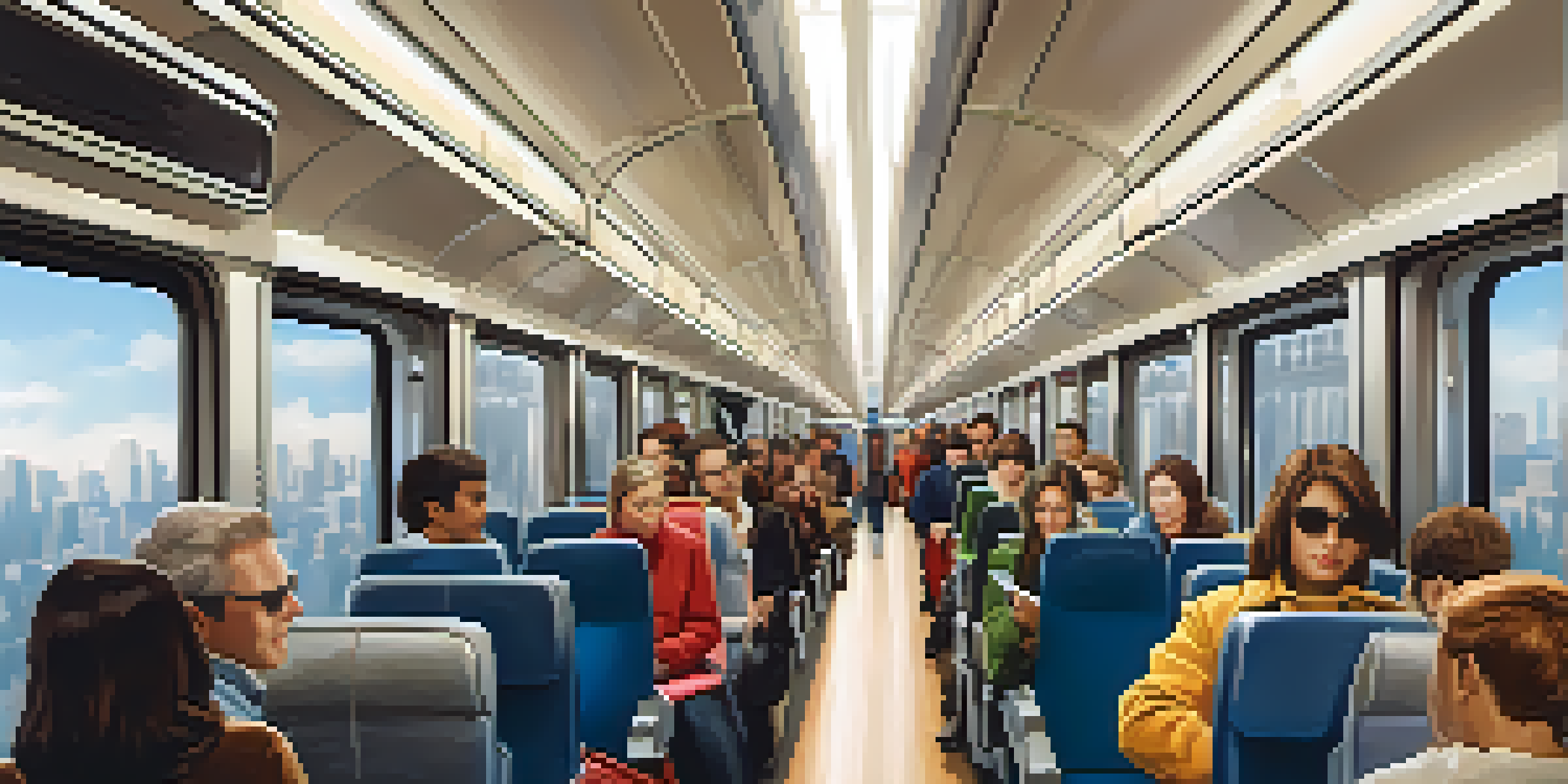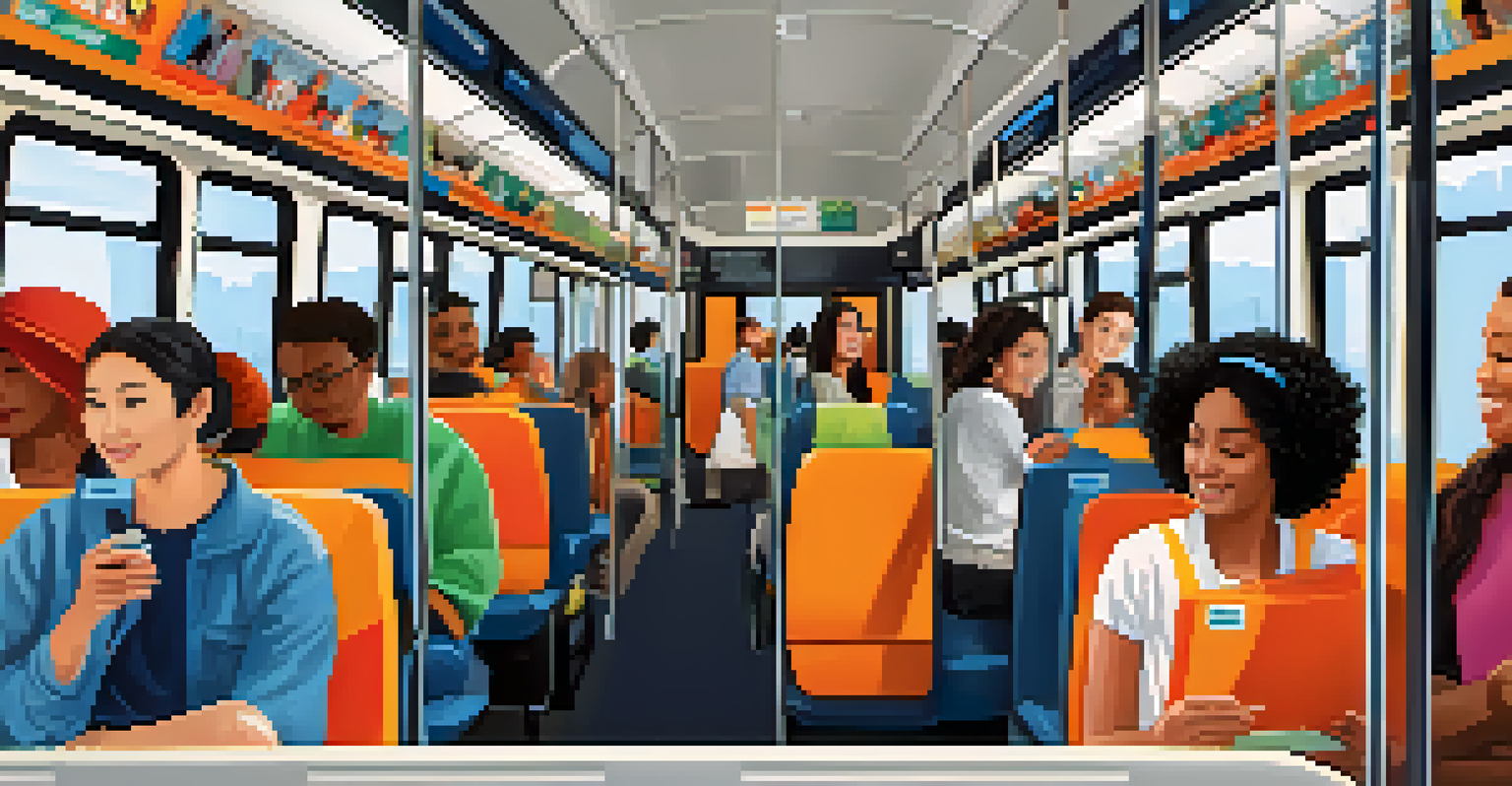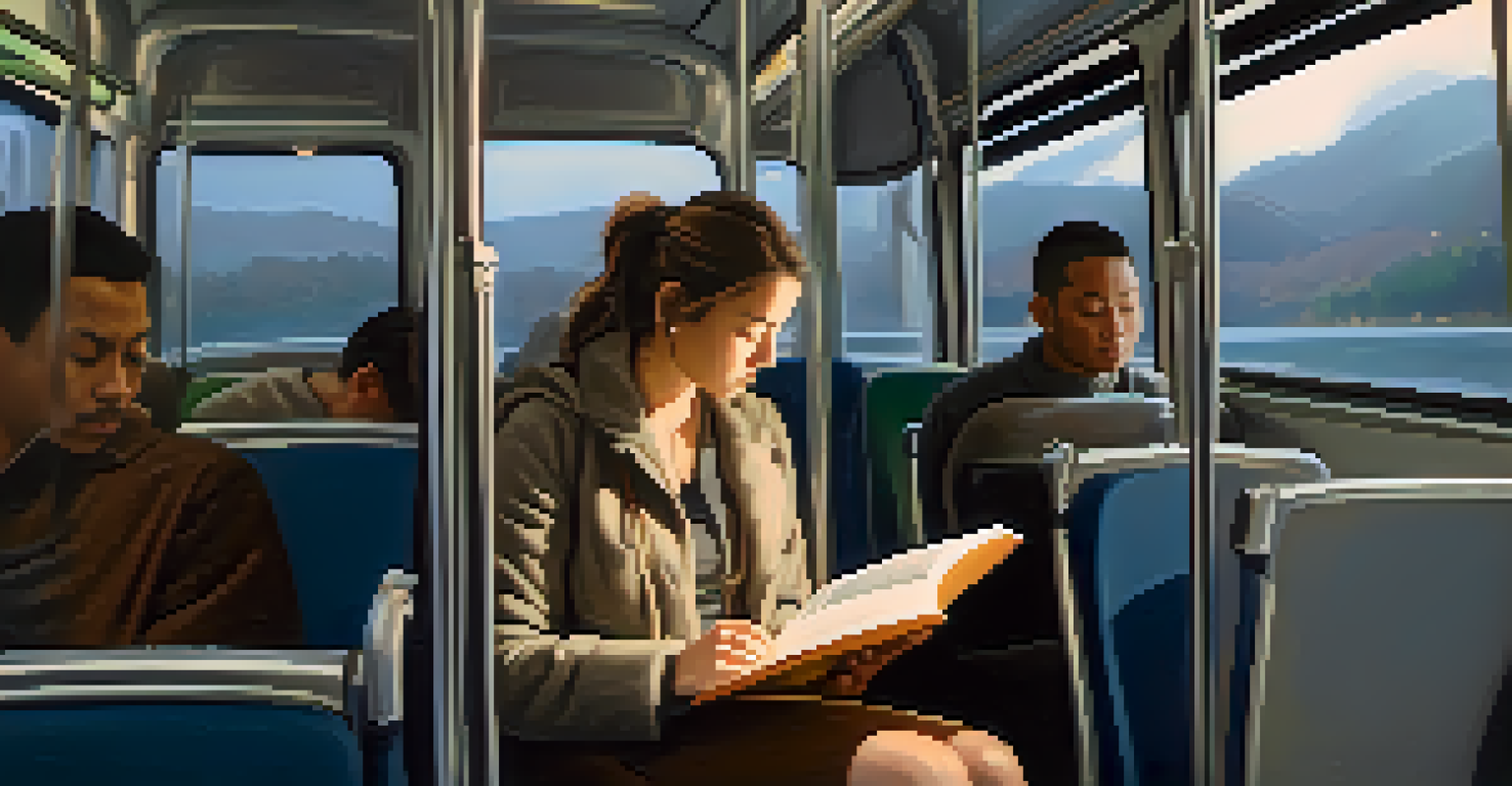Using Personal Space to Enhance Safety on Public Transport

Understanding Personal Space and Its Importance
Personal space refers to the physical distance we maintain between ourselves and others in social interactions. This space varies by culture and context, but it’s essential for comfort and safety. When we respect personal space, we create an environment that feels safer and more welcoming, especially in crowded areas like buses and trains.
The first rule of being a good citizen is to respect the personal space of others.
On public transport, where interactions can be unpredictable, maintaining personal space becomes crucial. It not only helps individuals feel more secure but also reduces the likelihood of unwanted physical encounters. Understanding and respecting this invisible boundary can transform our commuting experience from stressful to manageable.
Moreover, a respectful approach to personal space can foster a sense of community among passengers. When everyone is mindful of each other's comfort, it promotes a more pleasant atmosphere, encouraging people to use public transport more frequently. Embracing this concept is the first step towards enhancing overall safety.
Recognizing Situational Awareness on Public Transport
Situational awareness involves being conscious of your surroundings and the dynamics at play. On public transport, this means observing the behavior of fellow passengers and recognizing signs of discomfort or potential threats. By being aware of your own personal space and that of others, you contribute to a safer environment for everyone.

For instance, if you notice someone encroaching on your personal space, a simple shift in your position can signal your need for more distance. This non-verbal communication can often lead to a more respectful interaction. Such awareness can also help you identify when someone else may need assistance or when a situation is escalating.
Importance of Personal Space
Respecting personal space on public transport enhances comfort and safety for all passengers.
Building situational awareness takes practice, but it can significantly improve safety on public transport. By being alert and considerate, you not only enhance your own experience but also play a role in protecting those around you. This collective responsibility is vital in crowded settings.
Setting Boundaries: How to Communicate Your Needs
Establishing personal boundaries is crucial for comfort and safety on public transport. It’s important to communicate your needs, whether through body language or direct conversation. For example, if someone is too close for comfort, a subtle step back can send a clear message without confrontation.
Good manners will open doors that the best education cannot.
In some cases, being more vocal about your boundaries may be necessary. A polite request for more space can go a long way in ensuring your comfort. Carrying a book or wearing headphones can also serve as cues that you prefer not to engage, subtly reinforcing your personal space.
Remember, setting boundaries is not only about your comfort but also about teaching others to respect personal space. When you assert your needs, you encourage a culture of respect that benefits everyone. This proactive approach can lead to a more enjoyable commuting experience.
The Role of Design in Promoting Personal Space
Public transport design plays a significant role in how personal space is experienced. Features like spacious seating arrangements, designated standing areas, and clear pathways can help maintain comfort during commutes. When transport authorities prioritize these elements, they demonstrate a commitment to passenger safety.
For example, modern train systems often incorporate wider aisles and open seating to allow for personal space. These thoughtful design choices can alleviate the crowded feeling many passengers experience. Innovations like these remind us that safety is not just about individual actions but also about the environments we navigate.
Role of Situational Awareness
Being aware of your surroundings and the behavior of others can significantly improve safety in crowded settings.
Additionally, advocating for better design can empower passengers. By voicing concerns about overcrowding or discomfort, you contribute to a dialogue that can lead to improvements. A collaborative effort between passengers and transport providers can enhance safety for everyone.
Cultural Sensitivity and Personal Space Norms
Cultural differences significantly influence perceptions of personal space. In some cultures, close proximity is a sign of friendliness, while in others, it may be seen as intrusive. Understanding these differences can help passengers navigate social interactions more effectively on public transport.
For instance, someone from a culture that values close contact may not realize they’re making another passenger uncomfortable. By fostering an environment of cultural sensitivity, we can cultivate respect for diverse personal space preferences. This mutual understanding can lead to more harmonious interactions on public transport.
It’s essential to approach these differences with an open mind and a willingness to adapt. Awareness of cultural norms can help prevent misunderstandings and conflicts. Ultimately, embracing diversity enhances our collective safety and enriches our commuting experience.
The Impact of Technology on Personal Space Awareness
Technology has transformed the way we interact on public transport. Mobile apps that provide real-time updates on crowdedness can help passengers plan their trips to minimize discomfort. This proactive approach allows individuals to choose times and routes that align better with their personal space preferences.
Moreover, social media platforms enable passengers to share their experiences and suggest improvements for personal space on public transport. This collective voice can lead to actionable changes within transport systems, ensuring that safety remains a priority. By leveraging technology, we can enhance awareness and respect for personal space.
Cultural Sensitivity Matters
Understanding cultural differences in personal space preferences fosters respectful interactions among diverse passengers.
However, it’s vital to balance technology use with human interaction. While apps can provide valuable information, being present and attentive to our surroundings remains crucial. The best results come from combining technological advancements with a commitment to personal space awareness.
Promoting a Culture of Respect on Public Transport
Creating a culture of respect on public transport requires collective effort from passengers and transport authorities. Simple gestures like saying 'excuse me' when passing by or offering your seat to someone in need can set a positive tone. These acts promote an atmosphere where personal space is acknowledged and valued.
Additionally, educational campaigns by public transport providers can raise awareness about the importance of personal space. Workshops or informational posters can serve as reminders for passengers to respect each other’s boundaries. When everyone is on the same page, the overall safety and comfort of public transport improve.

Ultimately, fostering respect is a shared responsibility. By modeling respectful behaviors and encouraging others to do the same, we contribute to a safer and more pleasant commuting experience. Together, we can transform public transport into a space where everyone feels secure and respected.